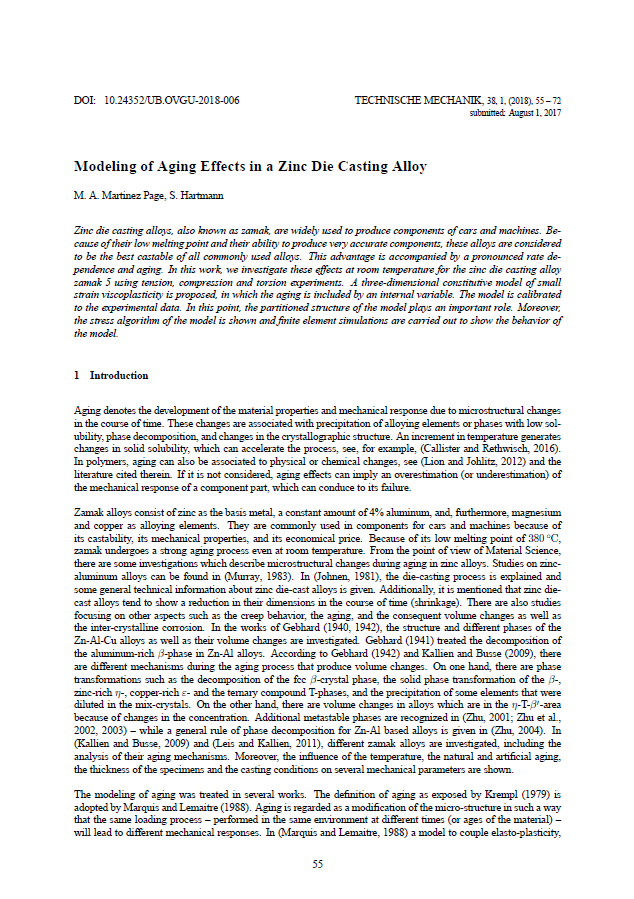Modeling of Aging Effects in a Zinc Die Casting Alloy
DOI:
https://doi.org/10.24352/UB.OVGU-2018-006Abstract
Zinc die casting alloys, also known as zamak, are widely used to produce components of cars and machines. Because of their low melting point and their ability to produce very accurate components, these alloys are considered to be the best castable of all commonly used alloys. This advantage is accompanied by a pronounced rate dependence and aging. In this work, we investigate these effects at room temperature for the zinc die casting alloy zamak 5 using tension, compression and torsion experiments. A three-dimensional constitutive model of small strain viscoplasticity is proposed, in which the aging is included by an internal variable. The model is calibrated to the experimental data. In this point, the partitioned structure of the model plays an important role. Moreover, the stress algorithm of the model is shown and finite element simulations are carried out to show the behavior of the model.





